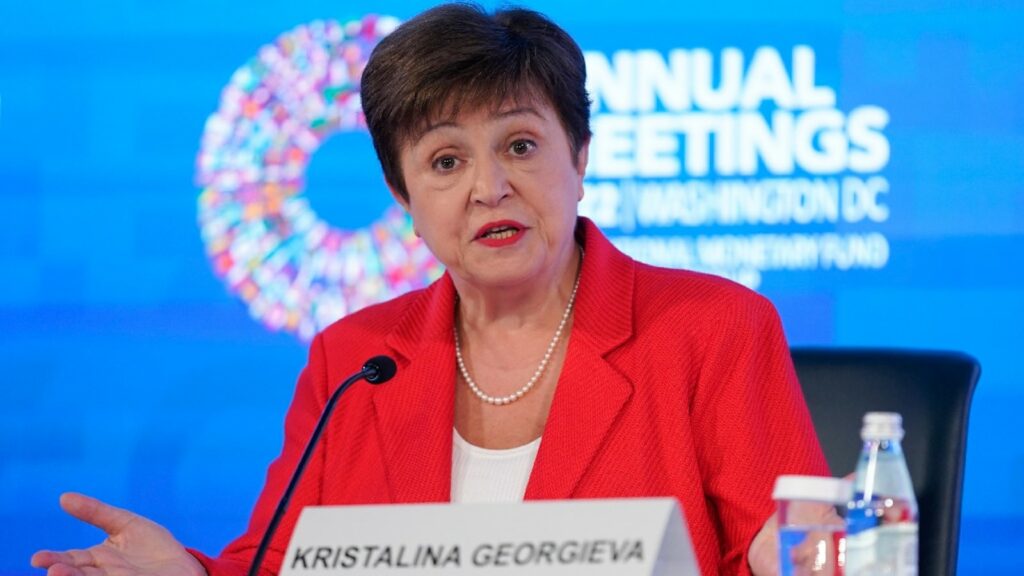
Kenya's debt owed to IMF and World Bank (Sh bn)
Kenya's external debt stood at Sh5.06 trillion as of 2024
The growth momentum is expected to continue into 2026, with the economy expected to expand marginally to 3.1 per cent.
In Summary

Audio By Vocalize

The International Monetary Fund (IMF) has revised
upwards its earlier global economic forecast by 20 basis points on easing cost
of living and relative calmness in global trade after the US paused heightened
tariffs for 90 days.
According to the World Economic Outlook report released on Tuesday evening, the lender now forecasts the global economic growth to expand by three per cent from an earlier projection of 2.8 per cent.
The growth momentum is expected to continue into 2026, with the economy expected to expand marginally to 3.1 per cent
“The modest decline in trade tensions, however fragile, has contributed to the resilience of the global economy so far,’’ the lender says in the report.
The lender says that most regions are experiencing modest growth upgrades this year and next, with Sub-Saharan Africa’s growth expected to expand four per cent in 2025 and 4.3 per cent in 2026.
Economic growth in advanced countries is expected to expand by 1.5 and 1.6 per cent, respectively, this year and next year, while that of emerging markets and developing economies is projected to grow by 4.1 per cent in 2025.
“This resilience is welcome, but it is also tenuous. While the trade shock could turn out to be less severe than initially feared, it is still sizeable, and evidence is mounting that it is hurting the global economy,’’ IMF says.
The anticipated growth is, however, still below pre-COVID levels. For instance, compared to the pre-April 2 forecast, global growth is revised downwards by 0.2 percentage points this year. At around three per cent, global growth remains disappointingly below the pre-COVID average.
It has projected a persistent decline in global trade as a share of output despite the recent front-loading, from 57 per cent in 2024 to 53 per cent in 2030.
The multilateral lender warns that the current trade environment remains precarious.
“Tariffs could well reset at much higher levels once the ‘pause’ expires on August 1 or if existing deals unravel. If this were the case, model-based simulations suggest global output would be 0.3 per cent lower in 2026.”
It adds that without comprehensive agreements, the ongoing trade uncertainty could increasingly weigh on investment and activity.
Further, while export front-loading has supported global activity so far, firms could become vulnerable if the demand for stockpiled goods does not materialize.
Although the War between Israel and Iran has de-escalated, the IMF warns that the geopolitical environment remains fragile, with a potential for more negative supply disruptions.
Moreover, while global inflation continues to decline, the latest price data suggests that inflation pressures are building gradually in the US.
Overall, US import prices in dollars have remained largely unchanged or even increased this year, suggesting that the cost of tariffs will be borne by US retailers and, eventually, as firms start to pass through higher costs into their prices.
In too many countries, the combination of high public debt and still elevated public deficits continues to be a cause for concern.
The lack of fiscal space makes these countries especially vulnerable to a sudden tightening in financial conditions that increases term premia.

Kenya's external debt stood at Sh5.06 trillion as of 2024